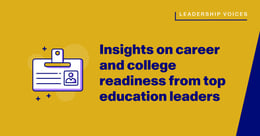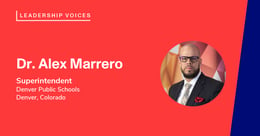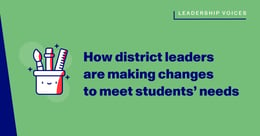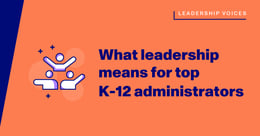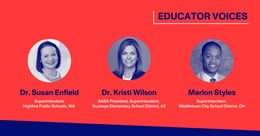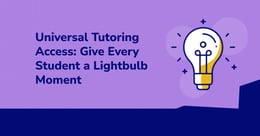
Checking career and college readiness at your district: What to assess
The career and college readiness landscape is evolving—and quickly. Here’s how to see whether your district’s programming is up to par.
Today’s K-12 students face realities that are dramatically different from earlier generations. Growing up alongside search engines, social media, and AI, they’ve always had virtually unlimited information and connections at their fingertips. These digital natives have also inherited pressing societal challenges—like the climate crisis, soaring college tuition, and rapidly changing demands in the job market.
It’s no surprise, then, that the career and college readiness (CCR) landscape is evolving with the times. Many school districts are already shifting away from the predominant “college-for-all” mentality, introducing CCR programming as early as elementary school, and breaking internal silos so counselors can engage other stakeholders to champion CCR. Still, there’s a long way to go before our education system serves all the needs of a modern student population. In fact, many school districts aren’t on the same page about best practices related to CCR.
To create a national standard for CCR among school districts, collaborators from WGU Labs, MajorClarity, Paper™, and the National Technical Honor Society created the CCR Benchmark Initiative. This initiative outlines five domains of CCR programming—providing a free self-assessment, annual benchmark report, and follow-up resources—so districts nationwide can evaluate their CCR systems. Let’s take a closer look at these benchmarks for success.
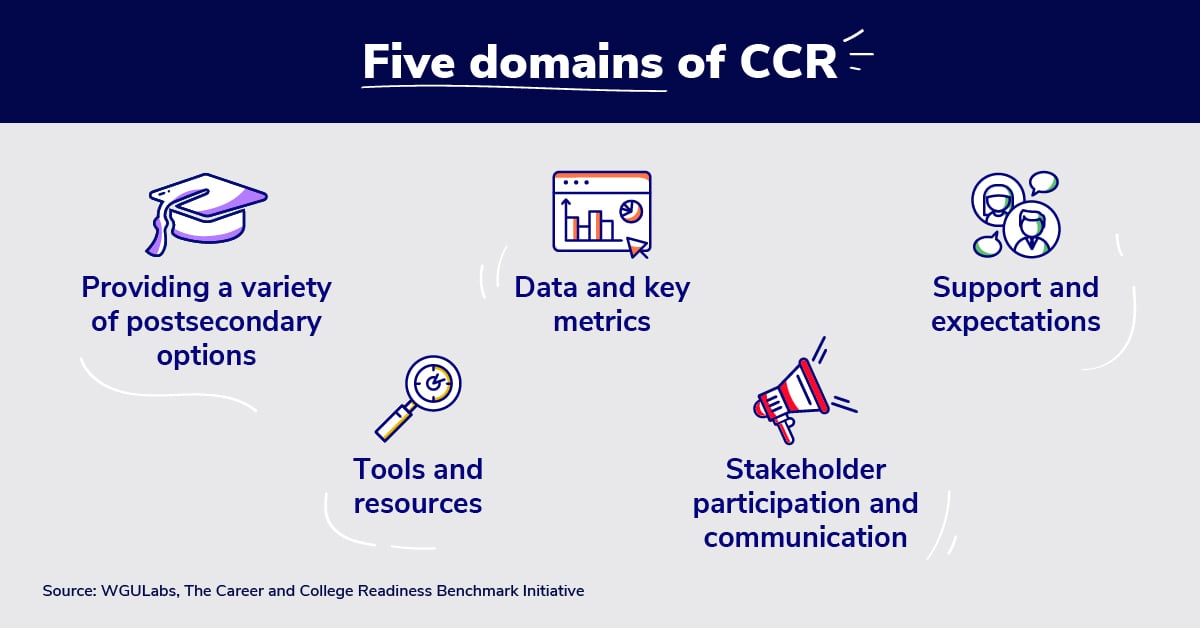
1. A variety of postsecondary options
Assess the breadth of information students have at their fingertips to learn about various postsecondary pathways.
Gone are the days when a college degree was seen as the ticket to a dream career. Case in point: A 2021 Gallup survey on noncollege paths showed that 45% of parents wish their children had more options available beyond traditional college pathways, and roughly half of Generation Z is interested in pursuing a traditional degree. This trend requires a fundamental shift in how we view the purpose of education.
Every student has unique strengths, preferences, and dreams, so districts should expose students to a range of postsecondary options. Among other ways, this can be done by hosting college fairs and guest speakers as well as providing robust guidance counseling and technology-enabled career exploration. Students should learn the steps to pursue not only traditional four-year universities, but also two-year colleges, vocational programs, apprenticeships, and military service.
Guiding questions
• Do your students and staff have access to databases to search for colleges or alternative postsecondary training programs (such as military, immediate employment, or industry certifications)?
• Do learners have access to adults and resources (such as databases) that can provide information on prerequisites and financial aid options for postsecondary degrees or training programs?
2. Support and expectations
Assess the mandates and requirements set across all students for key milestones in academic and postsecondary planning, focusing specifically on action in the middle grades.
It’s never too early for students to start exploring how their strengths and passions align with potential careers. The high schoolers you know might agree that planning for life after K-12 requires trial and error—and trial again. So why not jump-start the process before high school?
According to an Association for Career and Technical Education article on career exploration, middle school is the ideal time for students to find their strengths and interests, explore potential career avenues, and develop plans to reach future goals. This head start on career exploration can help students enter high school confidently, understanding what classes they need to take, programs they can apply to, and performance expectations they should keep in mind.
Guiding questions
• Do all middle school students have access to career exploration (such as through introductory CTE courses, technology-enabled career test drives, and work-based learning experiences)?
• Are these students transitioning to high school with an individual postsecondary plan aligned with academic course decisions?
• Are all high school students reviewing their postsecondary plans at least annually?
[READ: “CTE in education: 3 ways to improve career pathways for students”]
3. Stakeholder communication
Assess the level of input parents, teachers, and community stakeholders have on your CCR program.
CCR can’t be siloed to counselors or limited to one-off career fairs. Rather, these efforts should be regularly integrated into the classroom and the wider community. Although counseling and CTE departments do lead the charge, engaging families, educators, and business and community leaders can help drive trust and participation in your CCR programming.
For instance, districts can provide professional development and resources that enable teachers to integrate CCR into class time, such as having students research and present on different career paths or assigning activities that will help students develop the skills and mindsets they need to pursue their dreams.
Guiding questions
• Do caregivers get opportunities to learn about a variety of postsecondary options for their child and how to support their child’s postsecondary plans?
• Do teachers receive the professional development and resources they need to drive CCR during class time?
• Are you partnering with community businesses and organizations to provide career exploration opportunities for students, like career days and internships?
[READ: “What is college and career readiness? Pointers for educators”]
4. Tools and resources
Assess the level of access students have to resources surrounding career exploration, academic planning, and postsecondary applications.
As students explore and pursue their plans after graduation, it’s important to provide access to experiences—and not just information—through career simulations, microcredentials, internships, or cooperatives wherever possible.
However, even though in-person experiences are in demand, it can be tough to secure spots for all the students who might be interested. Moreover, many students have extracurricular activities, part-time jobs, or responsibilities at home that inhibit them from participating. To make the process cost-effective and scalable, many districts partner with virtual CCR solution providers, which allows all students to access interactive career exploration and academic planning content.
Guiding questions
• Can all students access career exploration and work-based learning opportunities?
• Is the career exploration content you’re offering interactive, engaging, and culturally relevant?
• Do all students have academic planning, guidance, and support when it comes to completing the required coursework for their postsecondary plans?
[READ: “3 ways to prepare high school students for college writing standards”]
5. Data and key metrics
Assess how well you use data for CCR decision-making and resource allocation.
It’s essential to collect data and feedback from a variety of stakeholders to measure the impact of your programming, inform interventions and resource allocation, and align your CCR efforts with your district’s broader values and objectives.
You can use metrics such as participation rates for work-based learning and college-level courses, high school graduation rates, postgraduation outcomes, and stakeholder feedback to ensure that your CCR programs are being offered as early, effectively, and equitably as possible. Make sure to also disaggregate data by subgroups to identify racial, socioeconomic, and gender-based disparities within your student population.
Guiding questions
• Are you using middle school students’ career interests to forecast high school course pathways and postgraduation outcomes at least once a school year?
• Which student demographic segments are participating in dual credit programs, Advanced Placement®* (AP®) courses, and CTE pathways?
*AP® is a trademark registered by the College Board, which is not affiliated with, and does not endorse, this website.
Ready to audit your district’s CCR programming—and find out how it stacks up against national standards? Take this CCR self-assessment survey today.

